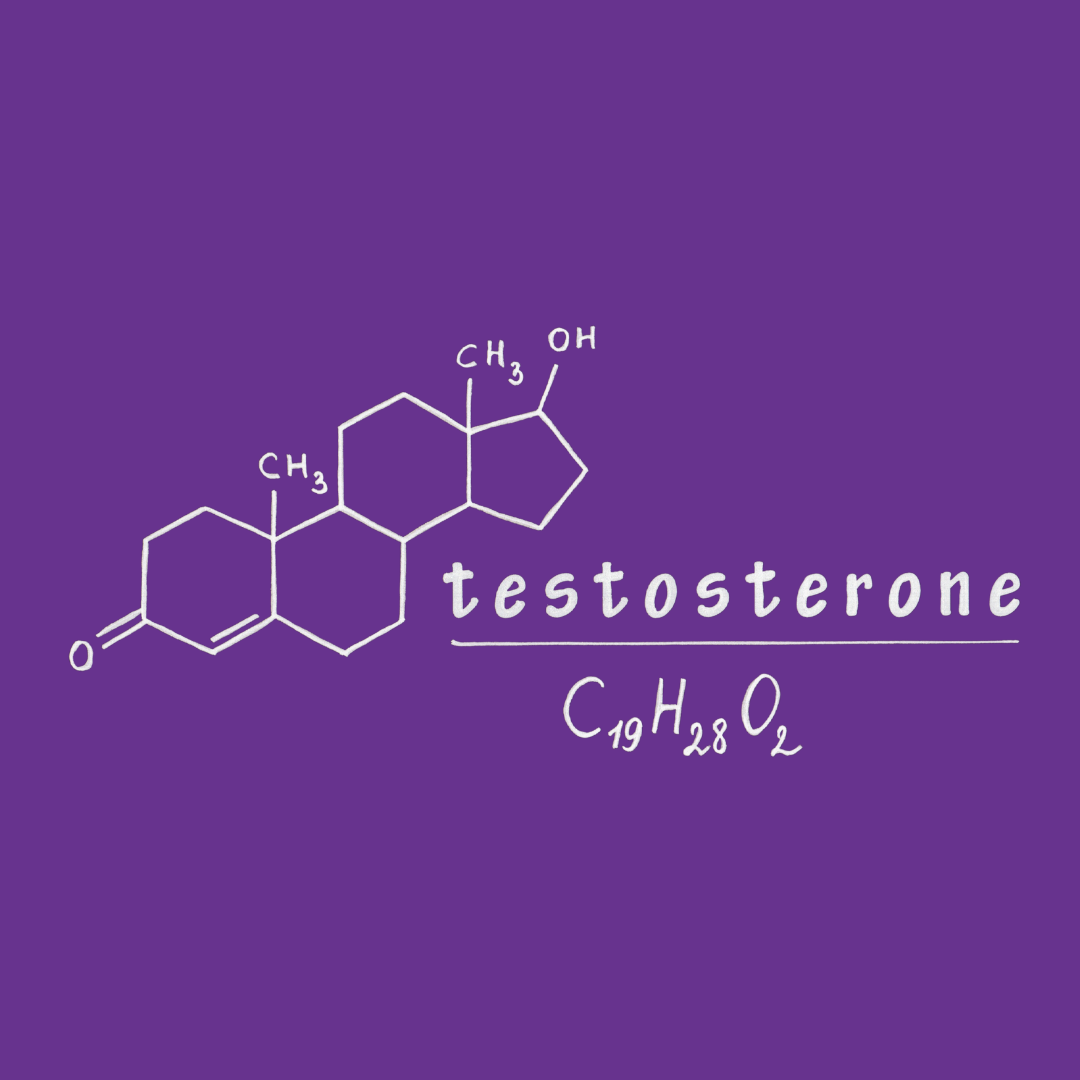Menopause is a significant phase in a woman's life and brings about a range of changes, both physical and emotional. One aspect that has garnered attention in recent years is the role of testosterone therapy for women during perimenopause and menopause.
Testosterone is not just a man's hormone. Women produce testosterone in 3 areas of the body: the adrenal glands (25%), the ovary (25%), and the conversion from other hormones in your body’s tissues (50%). Unlike the sex hormones estrogen and progesterone, the production of testosterone does not come to a screeching halt in menopause. Instead, testosterone slowly begins its decline in one’s 30s. Once a woman enters menopause, the ovary still produces testosterone although at a lower amount than in years past.
How do you know if you need testosterone? Testosterone testing is not useful in determining if you are deficient. There is no absolute testosterone level that determines if a woman is deficient. That’s right - no blood, saliva, or urine test can accurately determine if you have “low” testosterone, otherwise known as an androgen deficiency. Despite multiple clinical studies, the medical community just doesn’t know what an accurate “low” or “normal” level is for a woman at every age that correlates with how you feel. We don't know what testosterone levels correlate with clinical symptoms of low libido, mood, decreased muscle mass, or weight gain. Despite what you may see advertised on social media from influencers, The Endocrine Society, The American College of Obstetricians and Gynecologists, and The Menopause Society do not recommend prescribing testosterone to improve mood, hot flashes, night sweats, weight management, and bone health.
A recent review of the medical literature has revealed adding testosterone to estrogen (and progesterone/protestin if you have a uterus), early in menopause may help maintain muscle mass. Those who recommend and prescribe testosterone for the maintenance of muscle mass are doing so by entering a grey zone but doing so is considered reasonable with "Shared decision making". Testosterone is recommended to treat a low libido in postmenopausal women.
Here are the top 10 things you should know about testosterone use in women based on the medical evidence:
- Testosterone is indicated for persistent bothersome low libido in women whose other menopause symptoms have been controlled. This is why it is recommended to begin perimenopause/menopause treatment with estrogen, not testosterone. Many women find their libido improves once their menopause symptoms are treated.
- Oral estrogen can decrease your circulating testosterone level. Women who are looking to optimize their natural testosterone or are suffering from low libido should consider transdermal estrogen when beginning hormone therapy (patch, gel, spray, vaginal ring).
- Birth control pills can decrease your circulating testosterone, and increase your sex hormone binding globulin (SHBG) causing a low sex drive as a side effect. Changing to an IUD for contraception and uterine protection along with an estradiol patch, gel, spray or vaginal ring can help jump-start your libido while treating your menopause symptoms.
- Improvement in muscle mass and lean body mass was found to support beginning testosterone in early menopause along with estrogen (and progesterone/progestin in those with a uterus) in conjunction with strength training according to a recent medical literature review.
- For women who are suffering from low libido that is bothersome and void of any relationship problems, a trial of topical testosterone is recommended (with guidelines published in the medical literature) for at least 6 months. If at 6 months your sex drive doesn’t improve, testosterone was not the cause.
- Testosterone supplementation is safe for women when following evidence-based practices. Currently, there is no FDA-approved testosterone product for women in the U.S. Add medical societies recommend when prescribing testosterone for women, a man’s topical gel or cream is prescribed to be used at 1/10th of the dose. When using off-label products like pellets and injections, testosterone has risks: pesky hair growth on your chin, cheeks, and upper lips as well as menopause acne, hair loss on your head, deepening of your voice, and enlargement of your clitoris.
- Testosterone pellets or injections are NOT recommended by any medical society. They raise your testosterone levels above physiologic ranges and are considered. Topical creams and gels are recommended.
- The target goal for testosterone levels when on treatment is 20-70ng/dl. If your level is higher, side effects can occur.
- Testosterone use can cause your voice to deepen and/or become hoarse. This is a risk even at physiologic levels. Sadly, if this happens to you, the changes are usually irreversible.
- Testosterone is a controlled substance in the United States. The prescription of testosterone is regulated by the Drug Enforcement Administration (DEA).
So what does one do to combat feeling fatigued, flabby, and not in the mood in perimenopause and menopause? First, treat your symptoms by adding estrogen. You can use hormone therapy safely if you choose, even if you are still getting a period every month.
If you are suffering from vaginal dryness and painful sex, treat it! Vaginal estrogen is inexpensive and effective to improve your symptoms. If your vagina is not happy, your mind will say no to pain, resulting in a decreased libido.
Once your menopause symptoms improve, add resistance training to boost your muscle mass, improve your metabolism, and reshape your body. If you are putting in the hard work but do not see the expected changes, consider adding testosterone to your hormone therapy.
Once you feel good, are happy with yourself and your relationships, and still lack desire, you may be suffering from hypoactive sexual desire. Giving testosterone a try to boost your libido is indicated. MyMenopauseRx can help.





